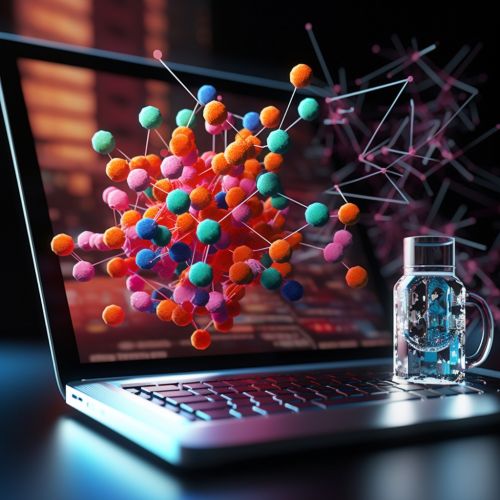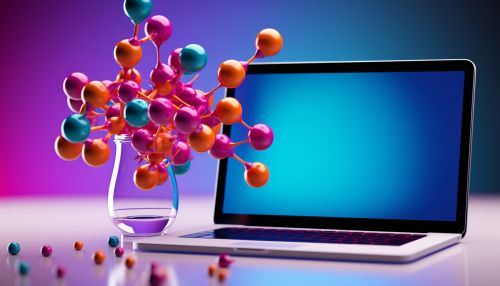The Role of Bioinformatics in Genomic Data Analysis
Introduction
Bioinformatics is an interdisciplinary field that involves the application of computational methods to understand biological data. It combines elements from biology, computer science, information engineering, mathematics, and statistics to analyze and interpret biological data. Bioinformatics has become an essential tool in various areas of biology, especially in the field of genomics. This article explores the role of bioinformatics in genomic data analysis.


Genomics and Bioinformatics
Genomics is a discipline in genetics that applies recombinant DNA, DNA sequencing methods, and bioinformatics to sequence, assemble, and analyze the function and structure of genomes (the complete set of DNA within a single cell of an organism). The advent of genomics has significantly increased the volume of biological data available. This surge in data has necessitated the development of sophisticated computational tools and techniques to manage, analyze, and interpret this data - a task that falls within the realm of bioinformatics.
Bioinformatics Tools and Techniques
Bioinformatics employs various tools and techniques for genomic data analysis. These include sequence alignment, gene finding, genome assembly, drug design, drug discovery, protein structure alignment, protein structure prediction, prediction of gene expression, protein-protein interactions, and the modeling of evolution.
Sequence Alignment
Sequence alignment is a method of arranging sequences of DNA, RNA, or protein to identify regions of similarity. These similarities could be a consequence of functional, structural, or evolutionary relationships between the sequences. In bioinformatics, sequence alignment is used in the identification of homologous genes and proteins, prediction of function of newly sequenced genes, and evolutionary studies.


Gene Finding
Gene finding, or gene prediction, is the process of identifying the regions of genomic DNA that encode genes. This process is crucial in annotating new genomes and understanding their biological functions. Bioinformatics tools play a crucial role in gene finding, predicting the locations and coding regions of genes in a genome using patterns and statistical models.
Genome Assembly
Genome assembly refers to the process of taking a large number of short DNA sequences and putting them back together to create a representation of the original chromosomes from which the DNA originated. In a shotgun sequencing project, this involves algorithms to handle enormous amounts of data and produce a correct and useful assembly.
Drug Design and Discovery
Bioinformatics is also instrumental in the field of drug design and discovery. Computational methods can help in the identification of potential drug targets, aid in the design of drugs with specific actions, and predict the effects of drugs on a biological system. These methods can significantly reduce the time and resources required to bring a drug to market.


Bioinformatics in Genomic Data Analysis
The primary role of bioinformatics in genomic data analysis is to help in the interpretation of genomic data. This involves the use of computational tools to make sense of the data, identify patterns, and make predictions about biological function and structure.
Data Management
One of the significant challenges in genomics is the management of the vast amounts of data generated by genomic sequencing technologies. Bioinformatics provides tools and techniques for managing this data, including databases for storing the data, algorithms for searching the data, and systems for integrating data from different sources.
Data Analysis
Bioinformatics tools are used to analyze genomic data and extract meaningful information. This includes identifying genes, predicting their function, understanding their structure, and studying their evolution. These tools can also be used to compare the genomes of different organisms, identify genetic variations, and study the effects of these variations on biological function.
Data Interpretation
The interpretation of genomic data is perhaps the most critical role of bioinformatics. The ultimate goal of genomic data analysis is to understand the biological implications of the data. Bioinformatics helps in this interpretation by providing tools and techniques for visualizing the data, making predictions about biological function, and modeling biological systems.


Challenges and Future Directions
Despite the significant advances in bioinformatics, several challenges remain. These include the need for more sophisticated algorithms for data analysis, better integration of data from different sources, and improved methods for interpreting the data. Additionally, as the volume of genomic data continues to grow, there will be an increasing need for more efficient data management systems.
The future of bioinformatics in genomic data analysis is promising. With the continued development of new computational tools and techniques, bioinformatics is set to play an even more critical role in genomics. This will not only enhance our understanding of biology but also lead to new discoveries and applications in areas such as medicine, agriculture, and biotechnology.
